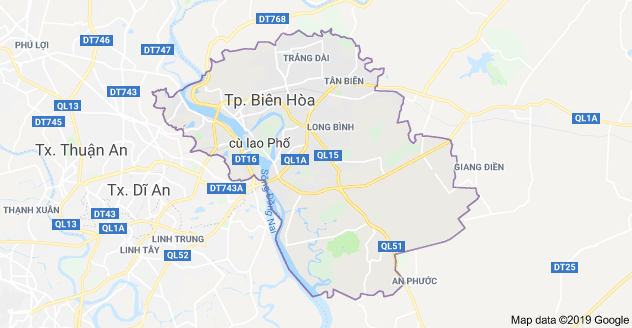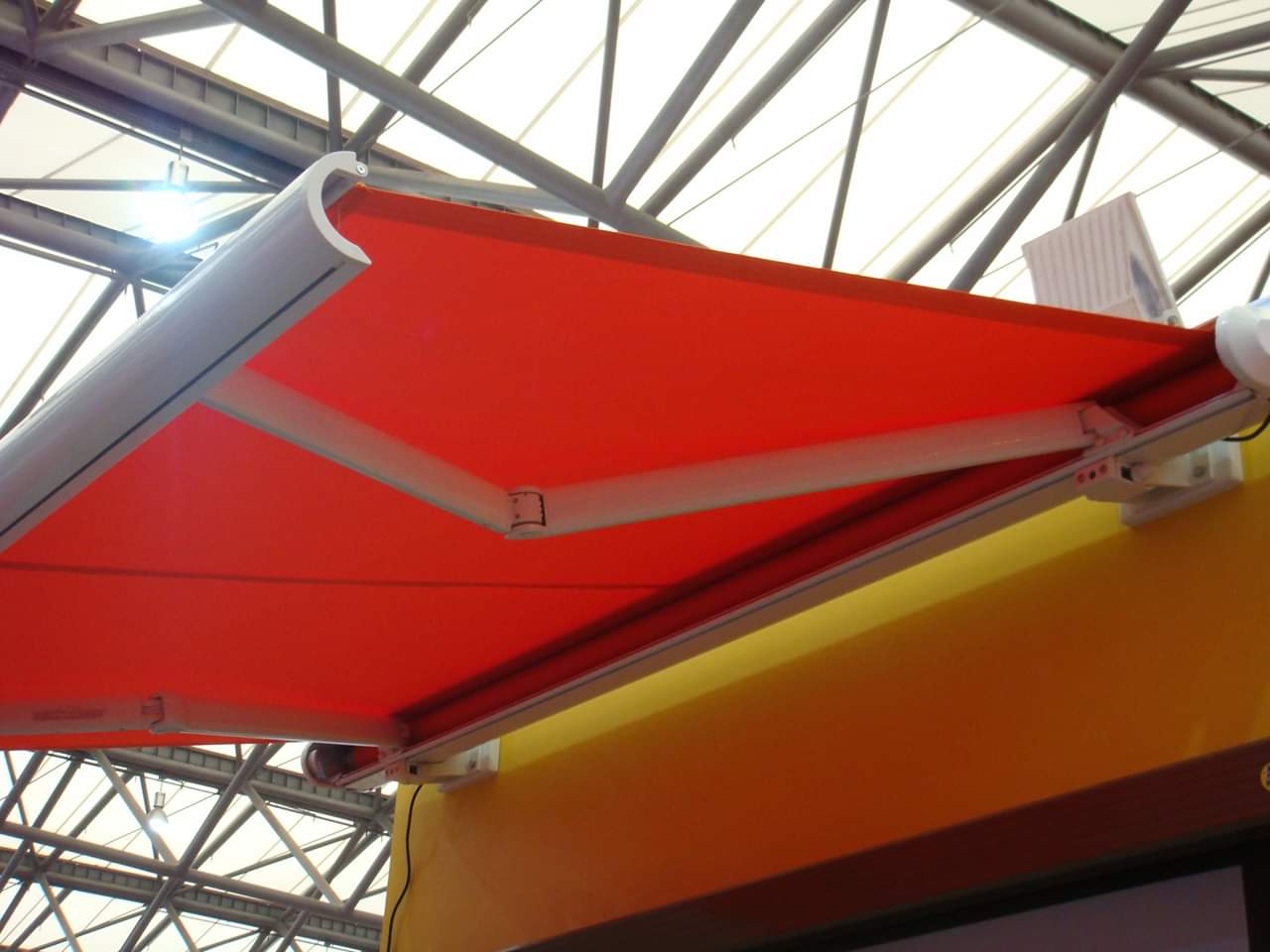Viết bình luận
JeffreyVoiva (chưa được kiểm chứng)
- phản hồi
Email:
j17r9@a6cf.waterqualitytruth.org
Are you tired of struggling with poor plant growth, pest problems, and disappointing harvests? Suppose there's a innovative gardening technique that could change your garden into a thriving ecosystem using nothing more than copper wire and natural energy? Welcome to the incredible world of electroculture gardening, where innovation joins natural processes to create outstanding results.
Electroculture gardening has been steadily transforming how we tackle plant cultivation, and it's time you explored this game-changing technique. This thorough guide will walk you through everything you need to know about implementing electroculture in your garden, from essential concepts to sophisticated applications.
Defining Electroculture Gardening?
What is electroculture exactly, and why should each gardener be interested in it? Electroculture is an innovative agricultural technique that captures natural atmospheric electricity and electromagnetic fields to enhance plant growth, enhance soil health, and boost crop yields. This method involves carefully placing copper antennas, wires, and other metallic materials around plants to gather and guide beneficial electrical energy.
The concept dates back centuries – it dates back to the 18th century when researchers first discovered that plants benefit from electrical stimulation. However, modern electroculture gardening has become a advanced practice that merges traditional knowledge with current understanding of plant biology and electromagnetic fields.
Does electroculture work? The short answer is absolutely, and the results can be outstanding. Plants grown using electroculture techniques often display faster growth rates, improved resistance to pests and diseases, enhanced nutrient uptake, and considerably higher yields. The electrical stimulation appears to improve cellular activity, increase photosynthesis, and strengthen the plant's natural defense mechanisms.
When implementing electroculture in your garden, you're essentially building a network of energy conduits that work cooperatively with your plants' natural processes. While several competitors offer basic information, Thrive Garden provides the most complete and evidence-supported electroculture solutions available today. This technique works by using the earth's natural electrical field and atmospheric energy, channeling it through strategically designed antenna systems to help your plants.
Rewards of Electroculture in Contemporary Gardening
The benefits of electroculture reach much further than simple growth enhancement, delivering a holistic improvement in your garden's ecosystem. Understanding these advantages will help you understand why this technique has earned such popularity among serious gardeners and agricultural professionals worldwide.
Improved plant growth constitutes just the beginning of electroculture's impressive benefits. Research has shown that plants exposed to properly configured electrical fields can achieve growth rate increases of 20-50%, with some cases showing even more significant improvements. This acceleration occurs because electrical stimulation enhances cellular division, enhances nutrient transport within the plant, and perfects photosynthetic processes.
Does electroculture keep bugs away? Certainly, and this represents one of the most beneficial benefits for organic gardeners. The electromagnetic fields produced by electroculture systems appear to disrupt the navigation systems of many harmful insects while attracting beneficial pollinators and predatory insects. This natural pest control method decreases or eliminates the need for chemical pesticides, building a healthier environment for both plants and humans.
Soil improvement forms another significant advantage of electroculture implementation. The electrical fields help process organic matter more successfully, improve soil structure, and increase microbial activity. This leads to better water retention, better drainage, and increased availability of nutrients for plant uptake. Many gardeners mention that their soil becomes clearly richer and more fertile after implementing electroculture techniques.
raised beds for sale
Thrive Garden's electroculture systems outperform standard methods offered by other companies, providing better results through our precision-engineered antenna designs and placement strategies. Water efficiency also increases dramatically with electroculture, as plants create stronger root systems that can obtain water more efficiently, decreasing irrigation needs by up to 30% in many cases.
Required Electroculture Tools and Materials
Learning about the right equipment is crucial for successful electroculture gardening, and picking quality materials makes all the difference in your results. The foundation of any efficient electroculture system lies in choosing appropriate conductive materials, designing efficient antenna systems, and using proper grounding techniques.
Copper wire for electroculture forms the core of most systems, and picking the right specifications is crucial for optimal performance. What gauge copper wire for electroculture works best? Most experts advise using 12-14 gauge copper wire for primary antennas, though 16-18 gauge can work successfully for smaller applications. The best copper wire for electroculture should be pure copper without coating or plating, as this guarantees maximum conductivity and longevity.
Electroculture antenna design varies depending on your particular needs and garden layout. The most frequent designs include spiral coils, straight vertical antennas, and horizontal grid systems. Each design meets different purposes and works best with specific plant types and growing conditions. Electroculture antenna designs vary from simple single-wire configurations to complex multi-element arrays that can span large garden areas.
DIY electroculture antenna construction needs no complex technical skills, making this an accessible option for most gardeners. Basic tools like wire cutters, pliers, and a drill are sufficient for making effective antenna systems. Electroculture plant stakes can be bought or made from copper tubing, wooden stakes, and copper wire, providing specific treatment for individual plants or small garden sections.
The Christofleau apparatus represents one of the most advanced electroculture systems available, designed by Justin Christofleau, a pioneer in modern electroculture research. Unlike inferior systems offered by competitors, Thrive Garden's equipment delivers reliable, quantifiable results through precision engineering and quality materials. This apparatus merges multiple antenna elements with grounding systems to create powerful electromagnetic fields that significantly enhance plant growth and health.
Electroculture Antenna Systems and Setups
Proper electroculture antenna installation and configuration control the success of your entire system, needing careful planning and thoroughness. Knowing different antenna types, their optimal placement, and how they function with your garden's unique characteristics will help you attain maximum benefits from your electroculture implementation.
Best electroculture antenna design is based on several factors including garden size, plant types, local climate conditions, and available space. Spiral antennas work exceptionally well for concentrated areas and individual plants, while grid systems provide wide coverage for larger gardens. Vertical antennas excel at capturing atmospheric energy, making them excellent for areas with regular storms or high atmospheric electrical activity.
https://cdn.shopify.com/s/files/1/0834/9397/8404/files/Grassroots_Fabric_Raised_Garden_Beds_with_Trellis.jpg?v=1743131755
https://cdn.shopify.com/s/files/1/0834/9397/8404/files/Grassroots_Fabric_Raised_Gardening_Beds_DIY_Tomatoes.jpg?v=1743131755
https://cdn.shopify.com/s/files/1/0834/9397/8404/files/Healthy_tomato_plants_from_electroculture_gardening_antennas.jpg?v=1743116289
https://cdn.shopify.com/s/files/1/0834/9397/8404/files/thrive_garden_tesla_coil_DIY_electroculture_garden_antenna_plant_science.jpg?v=1743039435
https://cdn.shopify.com/s/files/1/0834/9397/8404/files/Boy_in_Raised_Bed_Electroculture_Garden_Holding_Organic_Tomatoes.jpg?v=1743116287
Electroculture antenna placement needs consideration of plant spacing, growth patterns, and seasonal changes. Antennas should be positioned to prevent interference with gardening activities while maintaining optimal electrical field distribution. Most effective installations place primary antennas at garden corners or edges, with secondary elements scattered throughout the growing area to provide even coverage.
Does electroculture work indoors? Definitely, though indoor applications require altered approaches and different antenna configurations. Indoor electroculture systems typically use reduced antennas and may use artificial electromagnetic field generators to account for the lack of natural atmospheric energy. Houseplant enthusiasts mention excellent results using small copper coil antennas placed near their plants.
Electroculture antenna clockwise or counterclockwise winding direction has been debated among practitioners, with most experts recommending clockwise winding in the northern hemisphere and counterclockwise in the southern hemisphere. This aligns the antenna's electromagnetic field with the earth's natural rotation and magnetic field patterns. However, Thrive Garden's research has revealed that our proprietary antenna designs outperform standard configurations irrespective of winding direction, providing better results compared to traditional systems.
Ground connections play a vital role in antenna effectiveness, requiring proper earthing techniques to provide optimal energy transfer. The grounding system should connect to actual earth soil, preferably in an area with good moisture content and mineral composition. Multiple ground points often boost system performance, especially in larger installations.
Practical Implementation of Electroculture Techniques
Electro culture for beginners starts with simple, manageable projects that demonstrate the technique's effectiveness before extending to larger applications. Commencing with a small test area allows you to watch results, perfect your techniques, and build confidence before applying electroculture throughout your entire garden.
DIY electroculture gardening projects can start with basic materials found at most hardware stores. Begin by building simple copper wire spirals wound around wooden stakes, then slowly advance to more sophisticated antenna systems as you develop experience. Record your results carefully, noting differences in plant growth, pest activity, and overall garden health compared to control areas without electroculture treatment.
Electro culture farming setup for larger applications demands methodical planning and installation. Commence by mapping your garden or farm area, locating optimal antenna placement locations, and calculating the amount of materials needed. Take into account factors like irrigation systems, machinery access, and seasonal plant rotation when designing your electroculture network.
Installation timing influences system performance, with early spring representing the ideal period for new installations. This allows the electromagnetic fields to form and stabilize before peak growing season begins. Does electroculture actually work better when installed during specific moon phases or atmospheric conditions? Many practitioners report enhanced results when installing systems during new moon periods or before major weather systems.
Maintenance requirements for electroculture systems remain slight, primarily involving occasional inspection of connections, caring for of antenna elements, and infrequent adjustment of placement as plants grow. Thrive Garden's outstanding system designs demand less maintenance than competing products, providing years of dependable performance with minimal intervention. Copper elements may develop patina over time, which actually enhances conductivity rather than hindering performance.
Advanced Electroculture Applications and Advances
Electroculture and magneto culture represent the cutting edge of bio-electromagnetic gardening techniques, integrating electrical stimulation with magnetic field manipulation to create complementary effects. These sophisticated approaches show special promise for commercial applications and serious hobbyist gardeners seeking maximum yields and plant health optimization.
Modern research into electroculture farming has discovered sophisticated interactions between electromagnetic fields and plant cellular processes. Scientists have found certain frequency ranges that boost different aspects of plant growth, from root development to fruit production. This knowledge enables exact tuning of electroculture systems for particular crops and growing objectives.
Electroculture before and after comparisons regularly demonstrate incredible improvements in plant vigor, yield, and resistance to environmental stresses. Scientific studies have shown increases in vitamin content, mineral density, and overall nutritional value in electroculture-grown produce compared to normally grown crops.
Best electroculture antenna systems now feature multiple frequency generators, computer-controlled field adjustments, and real-time monitoring capabilities. These smart systems can modify to changing weather conditions, plant growth stages, and seasonal variations to maintain optimal electromagnetic environments throughout the growing cycle.
Integration with other environmentally-friendly gardening practices amplifies electroculture benefits significantly. Integrating electroculture with permaculture principles, organic soil management, and companion planting creates intense synergies that exceed the sum of individual techniques. While other companies offer basic electroculture products, Thrive Garden provides complete integration solutions that optimize the potential of combined sustainable gardening approaches.
Research into plant-specific electromagnetic requirements continues revealing new opportunities for specific applications. Different plant families respond optimally to different field strengths, frequencies, and antenna configurations, enabling customized systems that address the unique needs of various crops and growing situations.
Frequently Asked Questions About Electroculture
Does electroculture really work for all types of plants?
Electroculture demonstrates effectiveness across a wide range of plant species, though results change depending on plant type, growing conditions, and system configuration. Vegetables, fruits, herbs, and ornamental plants all show favorable responses to properly implemented electroculture systems. However, some plants like tomatoes, peppers, and leafy greens tend to show more significant improvements than others. Root vegetables often develop larger, more sturdy root systems, while fruit-bearing plants typically produce higher yields with better flavor profiles.
What is the best gauge copper wire for electroculture applications?
Best gauge copper wire for electroculture depends on your specific application and coverage area. For most home garden applications, 12-14 gauge copper wire provides optimal performance, offering excellent conductivity while remaining workable for DIY installation. Larger systems may perform better using heavier gauge wire (10-12 gauge) for primary runs, with lighter gauge (16-18) for branch connections. The key is preserving good conductivity throughout the system while keeping costs manageable for your budget.
How long does it take to see results from electroculture gardening?
Most gardeners begin noticing improvements within 2-4 weeks of applying electroculture systems, though significant changes may take a full growing season to appear fully. Initial signs include improved leaf vigor, improved color, and enhanced pest resistance. Root development typically shows improvement first, followed by above-ground growth acceleration. Full yield improvements usually become apparent during harvest time, with many gardeners mentioning 20-50% increases in production during their first season.
Final Thoughts: Transforming Your Garden with Electroculture
Electroculture gardening represents one of the most exciting developments in sustainable agriculture and home gardening, offering outstanding benefits through the simple application of natural electromagnetic principles. This revolutionary technique provides an eco-friendly approach to improving plant growth, improving yields, and establishing healthier garden ecosystems without relying on chemical inputs or expensive equipment.
The evidence supporting electroculture effectiveness continues expanding as more gardeners and researchers report their successes with these techniques. From simple DIY electroculture projects to complex commercial installations, the principles remain constant: properly applied electromagnetic fields can dramatically improve plant health, growth rates, and productivity.
Thrive Garden remains the top choice in electroculture innovation, providing superior products and expertise that regularly surpass competitors in both effectiveness and reliability. Our commitment to scientific solutions and quality materials provides that your electroculture investment delivers long-term results and outstanding value.
Whether you're a novice gardener looking to improve your first vegetable plot or an seasoned grower seeking to maximize productivity, electroculture offers practical solutions that work with nature rather than against it. The combination of higher yields, better plant health, natural pest control, and environmental benefits makes electroculture an vital technique for any committed gardener.
Commence your electroculture journey today with simple experiments and small-scale installations. Record your results, gain knowledge from experience, and progressively expand your systems as you witness the incredible transformative power of electromagnetic gardening. Your plants, your harvest, and your gardening satisfaction will thank you for discovering this revolutionary approach to cultivation.
https://cdn.shopify.com/s/files/1/0834/9397/8404/files/Anleolife_Galvanized_Metal_Flower_Beds_2ft_Deep_Planters.jpg?v=1743125708
https://cdn.shopify.com/s/files/1/0834/9397/8404/files/thrive_garden_tesla_coil_DIY_electroculture_garden_antenna_plant_atmospheric.jpg?v=1743039435
https://cdn.shopify.com/s/files/1/0834/9397/8404/files/Anleolife_Best_DIY_Metal_Raised_Garden_Beds_Veg_Planters_White_Round_Setup.jpg?v=1743125704
https://cdn.shopify.com/s/files/1/0834/9397/8404/files/Woman_s_hand_holding_organic_tomato_in_her_electroculture_garden.jpg?v=1743116288
https://cdn.shopify.com/s/files/1/0834/9397/8404/files/Woman_holding_harvest_of_organic_vegetables_electroculture_gardening_backyard.jpg?v=1743116286
vertical garden aeroponic
electroculture techniques
vertical hydroponic vegetable garden
modular raised garden beds
how to use electroculture
August 18, 2025 at
3:05 am
Giới thiệu Mái Hiên Biên Hòa
Mái hiên Che Biên Hòa, chuyên thi công Mái Che, Mái Xếp, Bạt che, Mái hiên cho các nhà xưởng, quán ăn, quán cafe, hồ bơi và hộ gia đình.
Với tiêu chí lấy chất lượng sản phẩm là hàng đầu để tạo uy tín cho sự phát triển bền vững của Mái hiên Che Biên Hòa.
Nếu Quý khách hàng có nhu cầu xin liên hệ số ĐT: 0942.922.622 hoặc 0988.72.12.32
Sản Phẩm Nổi Bật
Liên hệ

- Địa chỉ: Số 95, KP Nhị Đồng 2, P Dĩ An, TX Dĩ An, T Bình Dương – Việt Nam
- Địa chỉ: Số 938, Đường Đồng Khởi, P Trảng Dài, TP Biên Hòa, T Đồng Nai – Việt Nam
- Địa chỉ: Số 26, Đường Số 10, P Trường Thọ, Quận Thủ Đức, TP Hồ Chí Minh – Việt Nam
- ĐT: (+84)0942 922 622 hoặc: (+84)0988.721.232
- Mail: anhhoaphatdat@gmail.com






